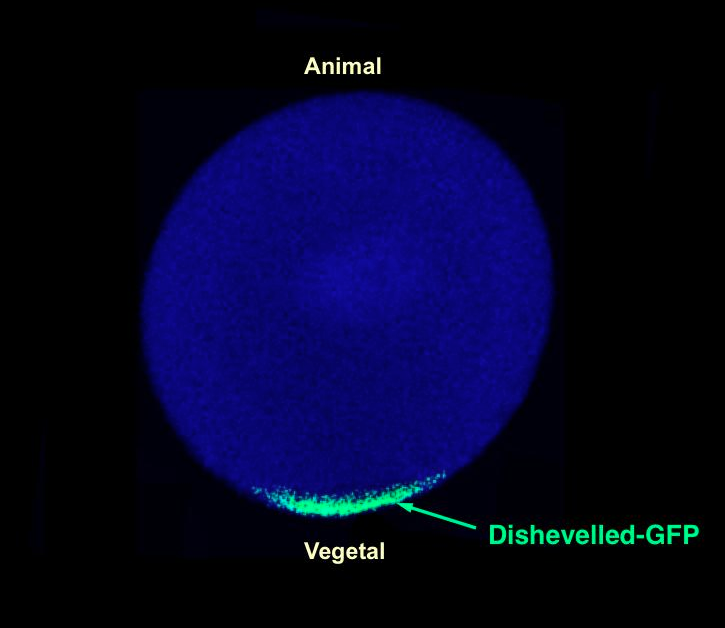Research
Molecular Mechanisms of Early Patterning

Dishevelled (Dsh) protein is targeted to the vegetal pole of the egg. Confocal image of a zygote injected with mRNA encoding GFP-tagged Dsh. After two hours, newly synthesized Dsh-GFP is localized at the vegetal cortex.
Relevant Papers
Khor JM, Guerrero-Santoro J, Ettensohn CA. Molecular compartmentalization in a syncytium: restricted mobility of proteins within the sea urchin skeletogenic mesenchyme. Development. 2023 Nov 15;150(22):dev201804. doi: 10.1242/dev.201804. Epub 2023 Nov 27. PMID: 37902109. PDF
Chess MM, Douglas W, Saunders J, Ettensohn CA. Genome-wide identification and spatiotemporal expression analysis of cadherin superfamily members in echinoderms. Evodevo. 2023 Dec 20;14(1):15. doi: 10.1186/s13227-023-00219-7. PMID: 38124068; PMCID: PMC10734073. PDF
Ettensohn CA. Embryonic polarity: Focusing on Dishevelled. Curr Biol. 2021 Dec 20;31(24):R1582-R1585. doi: 10.1016/j.cub.2021.10.060. PMID: 34932969. PDF
Stamateris, R. E., Rafiq, K., and Ettensohn, C. A. (2010). The expression and distribution of Wnt and Wnt receptor mRNAs during early sea urchin development. Gene Expr. Patterns 10: 60-64. PDF
Leonard, J. and Ettensohn, C. A. (2007). Analysis of dishevelled localization and function in the early sea urchin embryo. Dev. Biol. 306: 50-65. PDF
Ettensohn, C. A. (2006). The emergence of pattern in embryogenesis: Regulation of beta-catenin localization during early sea urchin development. STKE Perspective, Science 361: pe48. PDF
Weitzel, H. E., Illies, M. R., Byrum, C. A., Xu, R., Wikramanayake, A. H., and Ettensohn, C. A. (2004). Differential stability of beta-catenin along the animal-vegetal axis of the sea urchin embryo mediated by dishevelled. Development 131: 2947-2956. PDF
